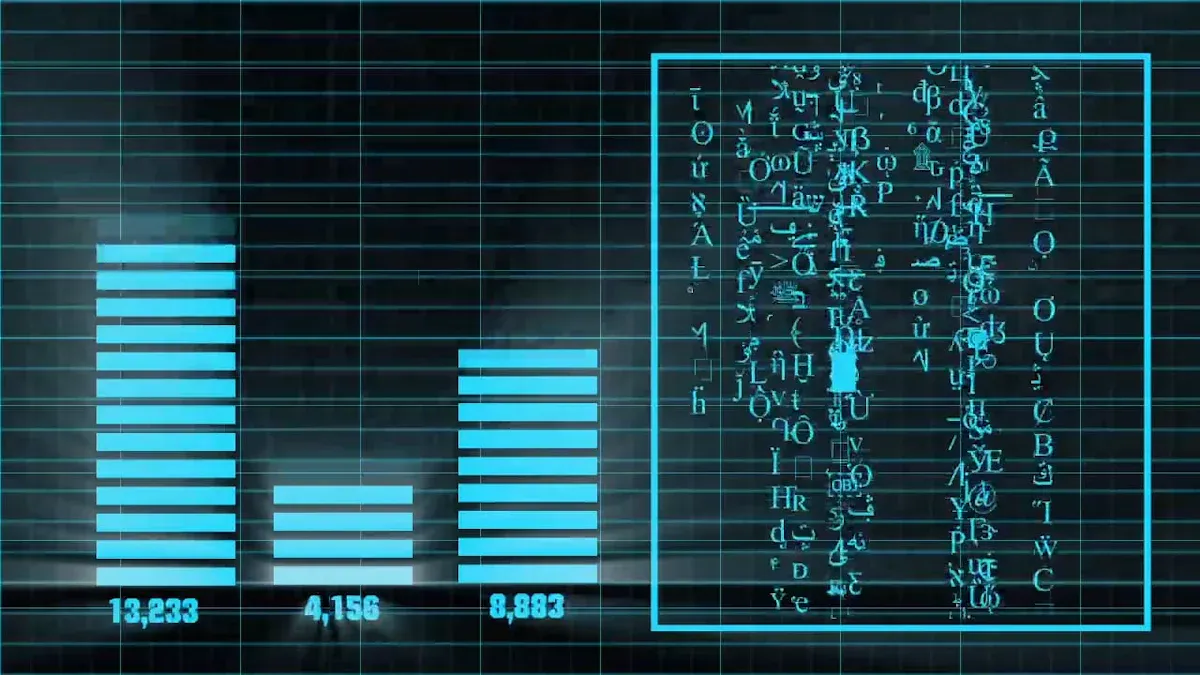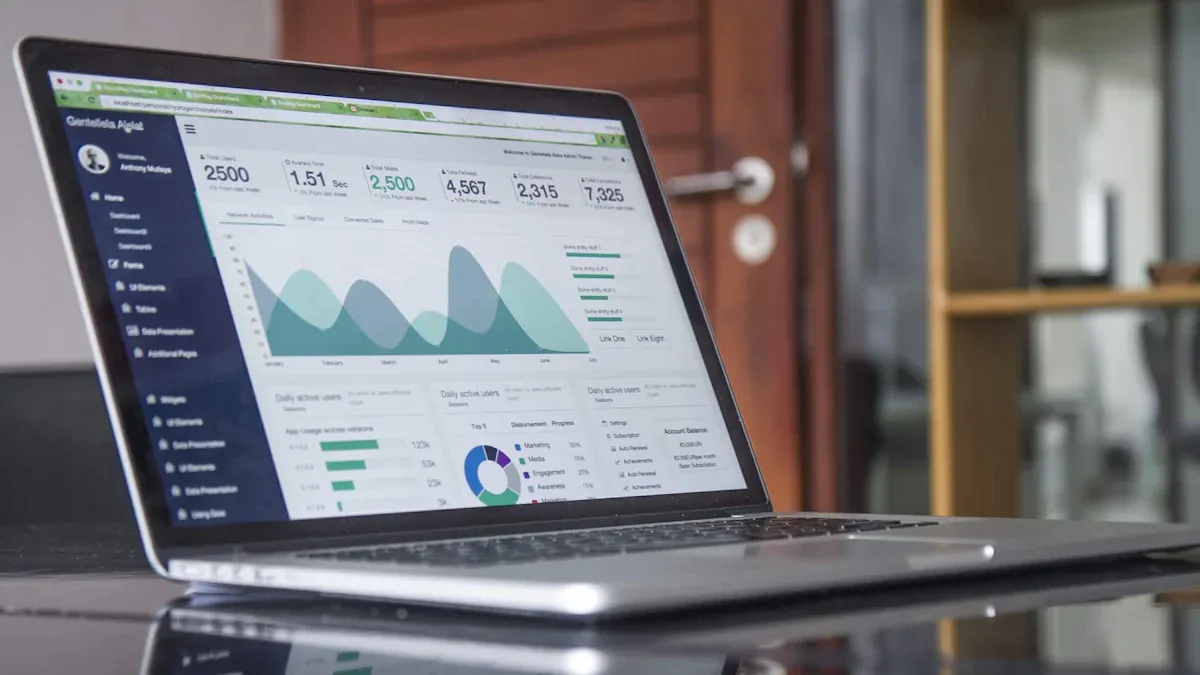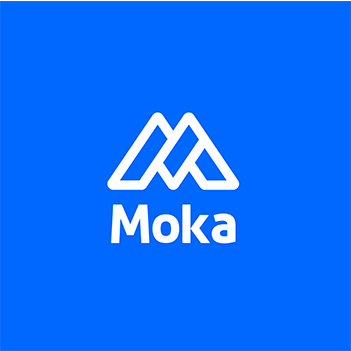How AI Predicts Employee Turnover and Enhances Retention Strategies

Employee retention plays a vital role in the success of any organization. High turnover disrupts workflows, increases costs, and impacts team morale. AI for turnover prediction offers a solution by analyzing patterns to identify employees at risk of leaving.
How AI for Turnover Prediction Works

The role of predictive analytics in turnover prediction
Predictive analytics plays a crucial role in helping you understand employee turnover. By analyzing historical data, AI identifies patterns and trends that signal potential attrition. Machine learning algorithms create profiles of employees at risk of leaving, allowing you to act before they decide to resign. Techniques like regression analysis and clustering uncover correlations between factors such as job satisfaction and turnover rates. These insights enable you to anticipate workforce changes and address talent gaps proactively.
Companies like Salesforce use predictive modeling techniques, including logistic regression and machine learning classifiers, to detect early warning signs of attrition. This approach has led to a 15% reduction in turnover. Similarly, SAP's predictive analytics model identified key turnover indicators, resulting in a 20% decrease in attrition rates.
Key data points AI analyzes to identify flight risks
AI for turnover prediction relies on specific data points to assess flight risks. These metrics provide a comprehensive view of employee behavior and satisfaction. Here are some key examples:
Key Metric | Description |
|---|---|
Turnover Rates | Measures the percentage of employees leaving the organization over a period. |
Flight Risk Scores | Quantitative scores indicating the likelihood of an employee leaving. |
Engagement Trends | Analyzes patterns in employee engagement over time. |
Natural Language Processing | Utilizes AI to interpret and analyze employee feedback for insights. |
By focusing on these metrics, you can gain a deeper understanding of what drives employee decisions and take targeted actions to improve retention.
Examples of AI tools used for turnover prediction
Several organizations have successfully implemented AI tools to predict and reduce employee turnover. Hilton Hotels used AI to analyze employee feedback and performance data, leading to a 25% improvement in satisfaction through tailored retention programs. Unilever leveraged AI-driven sentiment analysis in its "Future Leaders Program" to create personalized career development plans. This initiative increased employee satisfaction by 17% and reduced turnover rates.
IBM also demonstrated the power of AI for turnover prediction by using predictive analytics to identify at-risk employees. This strategy decreased turnover by 30%, showcasing how timely interventions can make a significant impact. These examples highlight the effectiveness of AI tools in transforming retention strategies.
Benefits of AI for Turnover Prediction and Retention
Enhanced accuracy in identifying at-risk employees
AI for turnover prediction provides unmatched accuracy in identifying employees who may leave. By analyzing patterns in employee data, AI tools can detect subtle signs of dissatisfaction or disengagement that traditional methods often miss. For example, IBM achieved a 30% decrease in attrition rates by using predictive modeling to analyze employee behavior and implement targeted interventions. Similarly, Microsoft reduced turnover by up to 25% by monitoring engagement levels and addressing potential issues early. These results highlight how AI improves accuracy and helps you retain top talent.
Real-time insights for proactive retention strategies
AI empowers you with real-time insights, enabling you to act quickly to prevent turnover. Machine learning algorithms can continuously monitor employee engagement and satisfaction, providing instant feedback on potential risks. SAP, a leading technology company, reduced attrition rates by 20% by leveraging real-time data to predict and address employee concerns. This proactive approach ensures you can implement retention strategies before dissatisfaction escalates.
Scalability in analyzing large and complex datasets
AI excels at handling large and complex datasets, making it an essential tool for modern HR teams. Traditional methods struggle to process vast amounts of data, but AI can analyze millions of data points efficiently. This scalability allows you to identify trends and patterns across your entire workforce, regardless of size. For instance, AI can manage datasets that exceed the capacity of traditional tools, ensuring no valuable insight is overlooked. By scaling your analytics, you can create retention strategies that address both individual and organizational needs.
AI-Driven Strategies to Improve Retention

Personalized development plans based on predictive insights
AI for turnover prediction enables you to create personalized development plans tailored to each employee's needs. By analyzing data such as performance metrics and career aspirations, AI tools identify growth opportunities for individuals. These insights help you design targeted training programs and career paths that align with employee goals. For example, Unilever's "Future Leaders Program" used AI to craft customized career plans, boosting employee satisfaction by 17% and reducing turnover rates. Similarly, a boutique hotel chain implemented personalized development initiatives, leading to a 40% drop in staff turnover and a 20% rise in customer satisfaction. These examples highlight how personalized plans foster engagement and loyalty.
Sentiment analysis to monitor employee satisfaction
Sentiment analysis uses AI to evaluate employee feedback and gauge workplace morale. By analyzing surveys, emails, and other communication, AI identifies patterns in employee sentiment. This allows you to address concerns before they escalate. Research shows that understanding employee sentiment helps businesses align strategies to improve workplace conditions and morale. SAP, for instance, leveraged sentiment analysis to monitor satisfaction levels, achieving a 20% reduction in attrition rates. With these tools, you can maintain a positive work environment and ensure employees feel valued.
Tailored interventions to address individual employee needs
AI empowers you to implement tailored interventions for employees at risk of leaving. Predictive models highlight specific factors contributing to dissatisfaction, enabling you to act quickly. For example, IBM reduced turnover by 30% by identifying at-risk employees and offering personalized solutions. Metrics like flight risk scores and engagement trends guide these interventions, ensuring they address individual concerns effectively. By focusing on tailored strategies, you can retain top talent and build a more committed workforce.
Predictive modeling to evaluate retention strategy outcomes.
Predictive modeling allows you to measure the success of your retention strategies with precision. By analyzing historical and real-time data, AI tools can forecast the impact of specific initiatives on employee turnover. This approach helps you identify which strategies work best and where adjustments are needed.
For example, if you implement a mentorship program to improve employee engagement, predictive models can estimate its effect on retention rates. These models analyze key metrics such as engagement trends, performance scores, and turnover rates before and after the program. This data-driven evaluation ensures you focus on strategies that deliver measurable results.
How predictive modeling benefits your retention efforts:
Objective decision-making: Predictive models eliminate guesswork by providing clear, data-backed insights. You can rely on these insights to make informed decisions about your retention strategies.
Continuous improvement: AI tools track the performance of your initiatives over time. This allows you to refine your strategies based on real-world outcomes.
Cost efficiency: By identifying the most effective strategies, you can avoid wasting resources on programs that don’t yield results.
Predictive modeling also helps you anticipate future challenges. For instance, if a strategy shows diminishing returns, the model can alert you to potential risks. This proactive approach ensures your retention efforts remain effective and adaptable. By leveraging predictive modeling, you can create a more stable and satisfied workforce.
Best Practices for Implementing AI Solutions
Setting clear goals for AI implementation in HR
Establishing clear goals is essential when integrating AI into HR processes. You should begin by identifying specific challenges that AI can address, such as improving employee retention or streamlining recruitment. Setting measurable objectives ensures that your efforts remain focused and results-driven. For example, you might aim to use AI-powered chatbots to enhance the candidate experience during hiring or implement predictive analytics to reduce turnover rates.
A structured framework can guide your goal-setting process. Consider the following stages where AI can enhance HR functions:
Stage | AI Enhancement Description |
|---|---|
Attract | Personalized job postings to target suitable candidates. |
Develop | AI-powered learning platforms for tailored skill development. |
Engage | Analyzing employee sentiment for proactive engagement. |
Retain | Predicting employees at risk of leaving for tailored strategies. |
Perform | Real-time feedback and coaching to improve performance. |
By aligning AI tools with these stages, you can maximize their impact on your workforce.
Training HR teams to effectively use AI tools
Training your HR team is crucial for the successful adoption of AI solutions. Equip your team with the knowledge and skills needed to operate AI tools effectively. Comprehensive training programs help HR professionals understand how to interpret AI-generated insights and apply them to real-world scenarios.
AI tools can significantly enhance HR performance. For instance, they collect and analyze performance data in real-time, enabling HR to track key performance indicators (KPIs) and provide actionable feedback. These tools also identify employees who need additional support and recognize high performers, boosting overall productivity. Predictive analytics further empowers HR teams to make informed decisions about talent management and retention strategies.
Collaborating with AI vendors for customized solutions
Partnering with AI vendors allows you to tailor solutions to your organization’s unique needs. Collaborations with experienced vendors ensure that AI tools align with your HR goals and integrate seamlessly into existing workflows. Vendors can also provide ongoing support and updates to keep your systems optimized.
Case studies highlight the benefits of such partnerships. Unilever worked with AI vendors to implement recruitment assessments, achieving a 16% improvement in hire quality and a 50% reduction in hiring time. Hilton used AI for personalized employee training, leading to a 34% increase in satisfaction scores. These examples show how vendor collaboration can drive measurable outcomes.
Continuously refining AI-driven strategies based on feedback.
Refining AI-driven retention strategies requires a commitment to continuous improvement. Feedback plays a critical role in this process, helping you identify areas where your strategies excel and where they need adjustment. By analyzing feedback, you can ensure your AI tools remain effective and aligned with your workforce's needs.
To measure the success of your refinements, track key metrics that validate your efforts. These metrics provide valuable insights into the impact of your strategies:
Customer Retention Rate (CRR): Tracks the percentage of employees retained over time, reflecting the value your strategies provide.
Churn Rate: Highlights the proportion of employees leaving, helping you pinpoint weaknesses.
Net Promoter Score (NPS): Measures how likely employees are to recommend your organization, indicating satisfaction levels.
Customer Satisfaction Score (CSAT): Captures direct feedback on employee experiences, allowing you to address dissatisfaction early.
Metric | Description |
|---|---|
Customer Retention Rate (CRR) | Percentage of employees retained over time; high rates suggest continuous value provided. |
Churn Rate | Proportion of employees leaving; helps identify weaknesses in processes. |
Net Promoter Score (NPS) | Measures likelihood of recommending the organization; high scores indicate employee satisfaction. |
Customer Satisfaction Score (CSAT) | Direct feedback on employee experiences; helps prevent dissatisfaction from escalating. |
You can also use AI tools to automate data analysis and categorize feedback. For example, sentiment analysis can flag patterns in employee concerns, enabling you to act quickly. Regularly reviewing this data ensures your strategies evolve to meet changing needs.
By refining your strategies based on feedback, you create a dynamic system that adapts to your workforce. This iterative approach not only improves retention but also strengthens employee trust and engagement.
AI has revolutionized how you predict employee turnover and improve retention strategies. By analyzing patterns and providing actionable insights, tools like predictive analytics and sentiment analysis empower you to address potential attrition proactively. Companies like Salesforce and Airbnb have achieved a 15% reduction in turnover by leveraging AI-driven programs and exit interviews. IBM also saw a significant drop in turnover, from 15% to 10%, through enhanced engagement strategies.
Balancing AI insights with ethical practices ensures fairness and builds trust. Transparency in data usage and maintaining employee privacy are essential for fostering a positive workplace culture. When you adopt AI responsibly, you create a more engaged and satisfied workforce, driving long-term organizational success.
FAQ
Q1: How accurate is MokaHR's AI in predicting employee turnover?
A: MokaHR's AI-powered platform analyzes multiple data points including engagement trends, performance metrics, and sentiment analysis to achieve high prediction accuracy. Our intelligent automation continuously learns from patterns, providing reliable flight risk scores trusted by over one million HR professionals.
Q2: What data does MokaHR's AI analyze to predict employee departures?
A: MokaHR's platform analyzes engagement trends, performance data, feedback sentiment, attendance patterns, and career progression metrics. Our AI uses natural language processing to interpret employee communications and surveys, creating comprehensive risk profiles. This data-driven approach enables organizations to identify at-risk employees before they decide to leave, supporting proactive retention strategies.
Q3: Can MokaHR's AI create personalized retention strategies for different employees?
A: Yes. MokaHR's AI generates personalized development plans and targeted interventions based on individual employee profiles and risk factors. Our platform identifies specific concerns driving potential turnover - whether career growth, work-life balance, or compensation - and recommends tailored solutions. This personalized approach has helped companies achieve up to 25% improvement in employee satisfaction through customized retention programs.
Q4: How quickly can MokaHR's AI detect early warning signs of employee departure?
A: MokaHR provides real-time insights and continuous monitoring of employee engagement indicators. Our AI algorithms can detect subtle changes in behavior patterns, sentiment shifts, and engagement levels as they occur, enabling immediate intervention. This proactive approach allows HR teams to address concerns before dissatisfaction escalates, significantly improving retention outcomes compared to traditional reactive methods.
Q5: Is MokaHR's AI turnover prediction suitable for small and medium businesses?
A: Absolutely. MokaHR's scalable platform is designed to benefit organizations of all sizes. Our AI efficiently processes datasets regardless of company size, providing valuable insights even for smaller teams. The platform offers affordable, user-friendly solutions that help SMBs implement sophisticated retention strategies without requiring extensive technical resources, democratizing access to enterprise-level analytics capabilities.
Q6: How does MokaHR ensure ethical use of AI in employee retention predictions?
A: MokaHR prioritizes ethical AI practices through regular algorithm audits, diverse training datasets, and transparent decision-making processes. Our platform balances AI insights with human judgment, ensuring retention strategies remain empathetic and context-aware. We maintain strict data privacy standards and provide clear explanations of how employee data is used, building trust while delivering actionable insights that enhance decision-making efficiency.
See Also
Harnessing AI Tools For Accurate Candidate Success Predictions
Utilizing AI Hiring Solutions To Build Predictive Models
Achieving Recruitment Excellence Through AI Solutions With MokaHR
Enhancing Employee Productivity With Effective Talent Management Systems
Improve Hiring Choices Using MokaHR's Recruitment Tracking Tools
From recruiting candidates to onboarding new team members, MokaHR gives your company everything you need to be great at hiring.
Subscribe for more information

